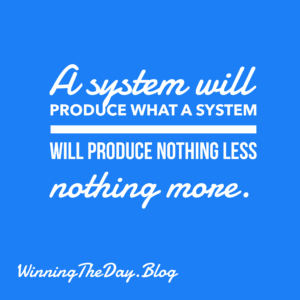Does this sound familiar? Your day is packed. You’re bouncing from meeting to email to urgent task, maybe grabbing lunch at your desk (if you’re lucky). You feel busy, constantly putting out fires. But at the end of the week, you look back and wonder… did I actually make progress on the things that really matter?
Yeah. I’ve been there. So. Many. Times.
It feels like we’re told the key to success is doing more – juggling projects, mastering multitasking, squeezing every last second out of the day. But what if that’s completely backward?
I recently revisited a book that fundamentally shifted how many people think about productivity and achieving big goals: “The ONE Thing” by Gary Keller (with Jay Papasan). And let me tell you, if you’re feeling scattered, overwhelmed, or stuck, this might just be the clarity bomb you need.
The Big Idea: Less Noise, More Signal
Keller’s core message is refreshingly simple: Stop trying to do everything. Focus relentlessly on the ONE most important thing.
Seriously. Extraordinary results don’t come from spreading yourself thin. They come from identifying the single most leveraged action you can take right now – the thing that, once done, will make everything else either easier or completely unnecessary.
Think of it like dominoes. You don’t have to push over every single one. You just need to find the lead domino and give it a solid push. Get that ONE Thing right, and it starts a chain reaction, knocking down bigger and bigger goals. How cool is that?
The Magic Wand: The Focusing Question
Okay, sounds great, but how do you find this mystical ONE Thing? Keller gives us a super practical tool: The Focusing Question.
Ask yourself this, over and over, for every part of your life:
“What’s the ONE Thing I can do, such that by doing it, everything else will be easier or unnecessary?”
Write it down. Stick it on your bathroom mirror. Ask it about your career goals, your health goals, your big project at work, even what you need to accomplish today. This question cuts through the clutter and forces you to identify what truly matters most right now.
Busting Those Pesky Productivity Myths
Part of embracing the ONE Thing is letting go of some common beliefs that actually hold us back. Keller calls them the “lies” of productivity:
- “Everything Matters Equally”: Uh, no. Remember the 80/20 rule? A few key things drive most of the results. Find them.
- “Multitasking is King”: We think we’re good at it, but science says otherwise. It tanks efficiency and increases errors. Focus is power.
- “I Just Need More Discipline”: willpower isn’t infinite! Instead of relying on brute force discipline for everything, build powerful habits around your ONE Thing.
- “Willpower is Always On Call”: Nope, it’s like a muscle that gets tired (or a phone battery that drains). Use your peak willpower time for your most important task. Don’t waste it on trivial stuff!
- “Work-Life Balance is the Goal”: Achieving something amazing often requires intentionally imbalancing things for a while – going deep on your priority. Keller calls it “counter-balance.”
Putting it Into Action: Time Blocking is Your Superpower
Knowing your ONE Thing is awesome. Actually doing it? That’s where the magic happens. Keller’s non-negotiable strategy here is Time Blocking.
This isn’t just adding stuff to your calendar. It’s scheduling significant, sacred appointments with yourself (like, multiple hours if possible) dedicated only to working on your ONE Thing. No email, no notifications, no “quick questions.” You protect this time fiercely. It’s the time when your most important work gets done.
Combine this with connecting your big “someday” goals all the way down to the ONE Thing you need to do right now, and you build incredible momentum. Oh, and get comfortable saying “no” (politely!) to things that pull you away from your priority.
My Takeaway
Honestly, embracing this “ONE Thing” philosophy feels like permission to breathe. Permission to stop the frantic juggling act and focus on what truly drives results. It’s about clarity, priority, and focused action. It’s simple, but it’s definitely not easy!
If you’re feeling stretched thin and want to make real strides towards your biggest goals, I seriously recommend digging into this concept. Start small: What’s the ONE Thing you can do today to move closer to a goal you care about?
Give it a shot! Let me know how it goes – what’s your ONE Thing right now?




